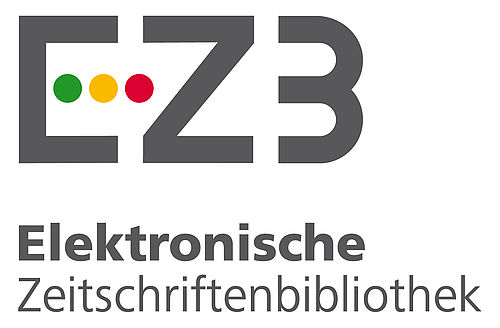Herbal remedies used for the treatment of infertility in females by traditional healers in the northwest of Algeria.
Abstract
Ethnopharmacological relevance: According to the world health organization, infertility is a global health issue affecting millions of people of reproductive age worldwide. Available data suggests that between 48 million couples and 186 million individuals have infertility globally.
Aim of the study: The aims of this work is to inventory plants used in the treatment of female primary infertility by the herbal healers in the northwest of Algeria.
Materials and methods: A number of 30 herbal healers and resource persons were interviewed. This ethnobotanical survey has permitted to identify 41 recipes in which involved 49 plant species belonging to 23 family used to treat primary infertility in women by traditional healers in the northwest of Algeria.The scientific name, family, common name, part used, mode of preparation as well as of administration, days of treatment and the indication are provided.
Results: Results show that The Lamiaceae family is the best represented with 9 species and 32.14% of the frequency of use, followed by the Apiaceae with 8 species and Asteraceae with 4 species and frequency of use 9.52% for each .The aerial parts are the most commonly parts used with a rate of 22% of total parts of the plant, followed by the leaves with 18%, seeds 16%,root and rhizome 12%,fruit and flower (10% each); bark bulb(4% each), kernel and pollen grains(2% each) Infusion is the main mode of preparation with rate of 40% of total preparations, mixture with 37%, decoction with 17%, and finally paste with 6%. Recipes were principally taken orally (83 %) or topically (17%) as poultice (10%) or as vaginal steaming (7%).
Conclusions: Herbal healers in northwest of Algeria have a wide range of herbal remedies used to treat primary infertility in females; their knowledge is a natural heritage from their ancestors transmitted through centuries.
Keywords: ethnobotany, infertility, recipes, herbal healers, northwest of Algeria.
Keywords
Ethical Statement
The authors have no conflicts of interest to declare. Acknowledgments: . Formatting of funding sources This research did not receive any specific grant from funding agencies in the public, commercial, or not-for-profit sectors. Ethics approval The authors declare that no patient data appear in this article.
Supporting Institution
university of Sidi Bel Abbes Pharmacy Departement
Project Number
p07
Thanks
The authors thank Pr Daliyahia and Pr Yebbous for their assistance and all the members of pharmacognosy Laboratory. Thanks, are also due to Pr Toumi for his contribution and assistance
References
- [1]Singh, B., Singh, B., Kishor, A., Singh, S., Nazir Bhat, M., Surmal, O., Maria Musarella, C., 2020 “Exploring Plant-Based Ethnomedicine and Quantitative Ethnopharmacology: Medicinal Plants Utilized by the Population of Jasrota Hill in Western Himalaya,” Sustainability, vol. 12, p. 7526, doi: 10.3390/su12187526.
- [2] Katiyar, C., Gupta, A., Kanjilal, S., Katiyar, S., 2012. Drug discovery from plant sources: An integrated approach. Ayu, vol. 33, pp. 10–19, doi: 10.4103/0974-8520.100295.
- [3] Signorini, M., 2007. Conoscenze etnobotaniche e saperi tradizionali nel territorio di San Miniato (Pisa). Atti Soc. Toscana di Sci. Nat. Mem. Ser. B, vol. 114, pp. 65–83, Jan. 2008.
- [4] R. Voeks, “Ethnobotany,” 2017.
- [5] “Infertility.” [Online]. Available: https://www.who.int/news-room/fact-sheets/detail/infertility.
- [6] Guo, J., 2021. Gut Microbiota in Patients with Polycystic Ovary Syndrome: a Systematic Review. Reprod. Sci, doi: 10.1007/s43032-020-00430-0.
- [7] Hadj-Seyd, A., Kemassi, A., Hadj Kouider, Y., Harma, A., 2016. Traitement de l’infertilité : plantes spontanées du Sahara septentrional. Phytotherapie, vol. 14, no. 4, pp. 241–245 , doi: 10.1007/s10298-015-1000-9.
- [8] Slighoua, M., Mahdi, M., Ez-Zahra Amrati, I., Boukhira, F., 2019. Ethnopharmacological Survey of Medicinal Plants Used in the Traditional Treatment of Female Infertility in Fez Region , Morocco Ethnopharmacological Survey of Medicinal Plants Used in the Traditional Treatment of Female Infertility in Fez Region , Morocco,” no., doi: 10.3166/phyto-2019-0194.
- [9] Rajeh, M. A. B., Kwan, Y.P., Zakaria, Z., Latha, L. Y., Jothy, S. L., Sasidharan, S., 2012. Acute toxicity impacts of Euphorbia hirta L extract on behavior, organs body weight index and histopathology of organs of the mice and Artemia salina. Pharmacognosy Res., vol. 4, no. 3, pp. 170–177, , doi: 10.4103/0974-8490.99085. [10] Lamchouri, F., Settaf, A., Cherrah, Y., El-Hamidi, M., Tligui, N., Lyoussi, B., Hassar, M., 2012. Experimental toxicity of Peganum harmala seeds. Ann. Pharm. Fr., vol. 60, no. 2, pp. 123–129,.
- [11] Chaachouay, N., Benkhnigue, O., Douira, A., Zidane, L., 2021. Poisonous medicinal plants used in the popular pharmacopoeia of the Rif , northern Morocco Toxicon Poisonous medicinal plants used in the popular pharmacopoeia of the Rif , northern Morocco. Toxicon, vol. 189, no. January, pp. 24–32, doi: 10.1016/j.toxicon.2020.10.028.
- [12] Najem, M., Ibijbijen, J., Nassiri, L., 2019. Quantitative Ethnobotanical Study of Poisonous Medicinal Plants used in the Traditional Pharmacopoeia of the Central Middle Atlas Region : Morocco. no., doi: 10.32859/era.18.36.1-17.
- (13) Sharma, A. K., Sharma, A., Singh, M., Kumar, A., 2015. The effect of Ruta graveolens on ovarian function in women with polycystic ovary syndrome (PCOS)" Journal of Ethnopharmacology.
- (14) El-Denshary, M. S., El-Sayed, N. S., El-Khayat, M. A., 2013. The effect of Origanum vulgare on ovarian function in women with primary ovarian insufficiency. Complementary Therapies in Medicine
- (15) Sharma, A. K., Sharma, A., Singh, M., Kumar, A., 2016. The effect of Lavandula angustifolia on the menstrual cycle and fertility in women with polycystic ovary syndrome (PCOS). Journal of Ethnopharmacology
Abstract
Project Number
p07
References
- [1]Singh, B., Singh, B., Kishor, A., Singh, S., Nazir Bhat, M., Surmal, O., Maria Musarella, C., 2020 “Exploring Plant-Based Ethnomedicine and Quantitative Ethnopharmacology: Medicinal Plants Utilized by the Population of Jasrota Hill in Western Himalaya,” Sustainability, vol. 12, p. 7526, doi: 10.3390/su12187526.
- [2] Katiyar, C., Gupta, A., Kanjilal, S., Katiyar, S., 2012. Drug discovery from plant sources: An integrated approach. Ayu, vol. 33, pp. 10–19, doi: 10.4103/0974-8520.100295.
- [3] Signorini, M., 2007. Conoscenze etnobotaniche e saperi tradizionali nel territorio di San Miniato (Pisa). Atti Soc. Toscana di Sci. Nat. Mem. Ser. B, vol. 114, pp. 65–83, Jan. 2008.
- [4] R. Voeks, “Ethnobotany,” 2017.
- [5] “Infertility.” [Online]. Available: https://www.who.int/news-room/fact-sheets/detail/infertility.
- [6] Guo, J., 2021. Gut Microbiota in Patients with Polycystic Ovary Syndrome: a Systematic Review. Reprod. Sci, doi: 10.1007/s43032-020-00430-0.
- [7] Hadj-Seyd, A., Kemassi, A., Hadj Kouider, Y., Harma, A., 2016. Traitement de l’infertilité : plantes spontanées du Sahara septentrional. Phytotherapie, vol. 14, no. 4, pp. 241–245 , doi: 10.1007/s10298-015-1000-9.
- [8] Slighoua, M., Mahdi, M., Ez-Zahra Amrati, I., Boukhira, F., 2019. Ethnopharmacological Survey of Medicinal Plants Used in the Traditional Treatment of Female Infertility in Fez Region , Morocco Ethnopharmacological Survey of Medicinal Plants Used in the Traditional Treatment of Female Infertility in Fez Region , Morocco,” no., doi: 10.3166/phyto-2019-0194.
- [9] Rajeh, M. A. B., Kwan, Y.P., Zakaria, Z., Latha, L. Y., Jothy, S. L., Sasidharan, S., 2012. Acute toxicity impacts of Euphorbia hirta L extract on behavior, organs body weight index and histopathology of organs of the mice and Artemia salina. Pharmacognosy Res., vol. 4, no. 3, pp. 170–177, , doi: 10.4103/0974-8490.99085. [10] Lamchouri, F., Settaf, A., Cherrah, Y., El-Hamidi, M., Tligui, N., Lyoussi, B., Hassar, M., 2012. Experimental toxicity of Peganum harmala seeds. Ann. Pharm. Fr., vol. 60, no. 2, pp. 123–129,.
- [11] Chaachouay, N., Benkhnigue, O., Douira, A., Zidane, L., 2021. Poisonous medicinal plants used in the popular pharmacopoeia of the Rif , northern Morocco Toxicon Poisonous medicinal plants used in the popular pharmacopoeia of the Rif , northern Morocco. Toxicon, vol. 189, no. January, pp. 24–32, doi: 10.1016/j.toxicon.2020.10.028.
- [12] Najem, M., Ibijbijen, J., Nassiri, L., 2019. Quantitative Ethnobotanical Study of Poisonous Medicinal Plants used in the Traditional Pharmacopoeia of the Central Middle Atlas Region : Morocco. no., doi: 10.32859/era.18.36.1-17.
- (13) Sharma, A. K., Sharma, A., Singh, M., Kumar, A., 2015. The effect of Ruta graveolens on ovarian function in women with polycystic ovary syndrome (PCOS)" Journal of Ethnopharmacology.
- (14) El-Denshary, M. S., El-Sayed, N. S., El-Khayat, M. A., 2013. The effect of Origanum vulgare on ovarian function in women with primary ovarian insufficiency. Complementary Therapies in Medicine
- (15) Sharma, A. K., Sharma, A., Singh, M., Kumar, A., 2016. The effect of Lavandula angustifolia on the menstrual cycle and fertility in women with polycystic ovary syndrome (PCOS). Journal of Ethnopharmacology
Details
| Primary Language | English |
|---|---|
| Subjects | Pharmacognosy, Pharmacology and Pharmaceutical Sciences (Other) |
| Journal Section | Research Article |
| Authors | |
| Project Number | p07 |
| Early Pub Date | December 24, 2023 |
| Publication Date | December 25, 2023 |
| Published in Issue | Year 2023 Volume: 6 Issue: 2 |
-------------------------------------------------------------------------------------------------------------------------------













-------------------------------------------------------------------------------------------------------------------------
 CUPMAP Journal is licensed under a Creative Commons Attribution-NonCommercial-NoDerivatives 4.0 International License.
CUPMAP Journal is licensed under a Creative Commons Attribution-NonCommercial-NoDerivatives 4.0 International License.
-----------------------------------------------------------------------------------------------------------------------------------------
This is an open access journal which means that all content is freely available without charge to the user or his/her institution. Users are allowed to read, download, copy, distribute, print, search, or link to the full texts of the articles, or use them for any other lawful purpose, without asking prior permission from the publisher or the author. This is in accordance with the BOAI definition of open access.
